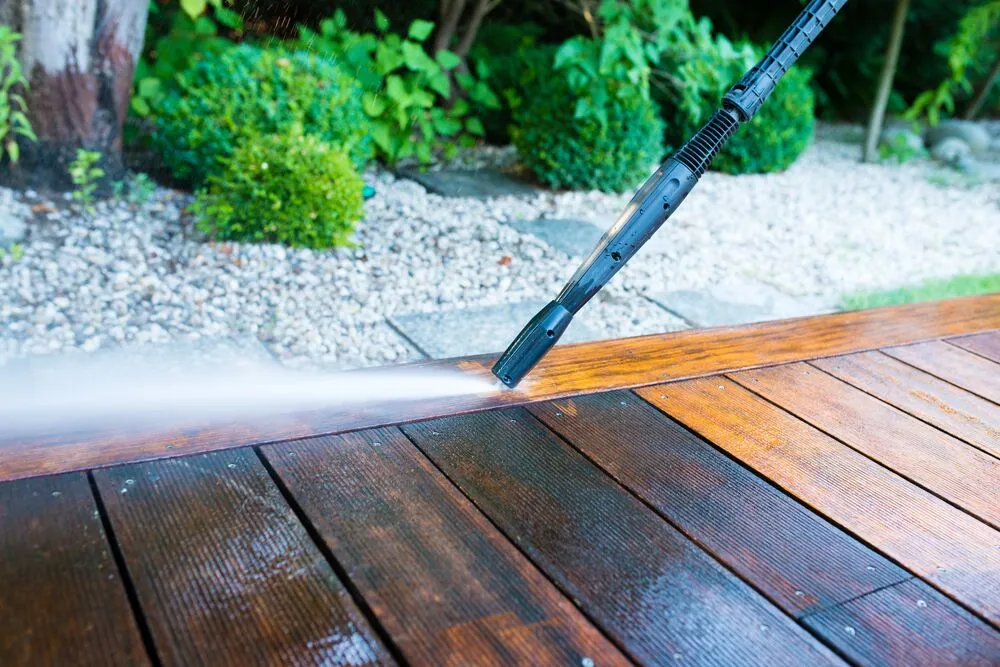Pressure washing is a powerful tool for maintaining the exterior appearance of your property. Incorrect usage can lead to costly damage or incomplete cleaning. Common mistakes, like using the wrong nozzle or incorrect pressure settings, can be easily avoided with the right knowledge.
Using excessive pressure can damage surfaces, while inadequate pressure may not clean effectively. Pay attention to these details to ensure a thorough and safe cleaning process. Choosing the right detergent and applying it correctly can make a significant difference. Professionals from Pressure Washing Miami recommend using eco-friendly solutions to protect both your surfaces and the environment.
Understanding Pressure Washing Techniques
Pressure washing techniques require choosing the correct pressure settings, selecting the proper nozzles and attachments, and using the right cleaning agents.
Appropriate Pressure Settings
Selecting the correct pressure setting is crucial to avoid damaging surfaces. Pressure levels can range from 1,300 to 4,000 PSI (pounds per square inch). Low-pressure settings (approximately 1,300 to 2,000 PSI) work best for cleaning delicate surfaces like wood or soft siding.
For tougher tasks, such as concrete driveways in Pressure Washing Miami, you may need medium to high-pressure settings (2,000 to 4,000 PSI). Always start at the lower end and gradually increase the pressure. It’s essential to perform a test patch on a small, hidden area to ensure the setting is appropriate.
Correct Usage of Cleaning Agents
Cleaning agents can significantly enhance the effectiveness of pressure washing. Some surfaces, like roofs and siding, may require specialized detergents to remove algae and mildew. Biodegradable detergents are an environmentally friendly option.
Applying the detergent correctly is key. Use a soap nozzle to apply the detergent from bottom to top. Rinse off using a high-pressure spray.
Choosing the right cleaning agent and application method can make or break your pressure washing project. Special care should be taken to avoid harsh chemicals that might harm surrounding vegetation or exterior finishes.
Common Mistakes to Avoid in Pressure Washing
Proper pressure washing technique preserves surfaces and ensures safety. Common errors include misjudging the pressure needed, neglecting safety gear, skipping equipment maintenance, and overlooking environmental concerns.
Over-Washing and Under-Washing Surfaces
Using too much pressure can damage surfaces. Concrete and brick can be etched, while wood can splinter. In contrast, using too little pressure won’t adequately clean the surface.
GWS Pressure Cleaning Miami recommends testing a small area first. Adjust the pressure settings based on the material being cleaned. For delicate materials like wood, use lower pressures and softer nozzles.
Ignoring Safety Measures
Safety should always come first. High-pressure water can cause severe injuries. Always wear protective gear such as gloves, goggles, and sturdy footwear.
GWS Pressure Cleaning Miami ensures all staff are trained in safety protocols. Secure ladders properly when cleaning elevated areas. Avoid wet, slippery surfaces to minimize fall risks.
Neglecting Regular Maintenance of Equipment
Regular maintenance of pressure washing equipment is crucial for efficient operation and safety. Dirty or worn-out nozzles can affect pressure and cause streaks.
GWS Pressure Cleaning Miami schedules routine check-ups for all machines. Clean and inspect hoses for leaks and damage. Replace oil and filters as needed.
Proper storage of the equipment prevents rust and other issues, extending its lifespan.
Failing to Consider Environmental Factors
Pressure washing can impact the environment. Chemicals and dirty water runoff can harm vegetation and wildlife. GWS Pressure Cleaning Miami uses eco-friendly detergents and captures wastewater to minimize pollution.
Be mindful of local regulations regarding water disposal. Also, avoid washing on extremely hot or cold days to prevent rapid drying or ice formation, which could lead to surface damage or unsafe conditions.
Stay in the know by following all updates at Creative Released!



